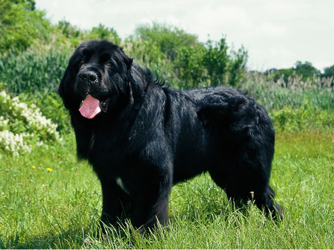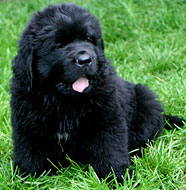| The major health concerns for the Newfoundland are SAS (sub-aortic stenosis), cystinuria, elbow Dysplasia, CHD (canine hip Dysplasia), and gastric torsion. There are several minor concerns as well that include OCD (osteochondritis dissecans), entropion, ectropion, vWD (Von Willebrand’s Disease), cataracts, and cruciate ligament rupture. Epilepsy is occasionally seen in this breed. It is suggested that the hips, elbows, cardiac system, and eyes be regularly tested. The average life span of a healthy Newfoundland is 8 to 10 years. The Newfoundland can have sensitivity to anesthesia. |







